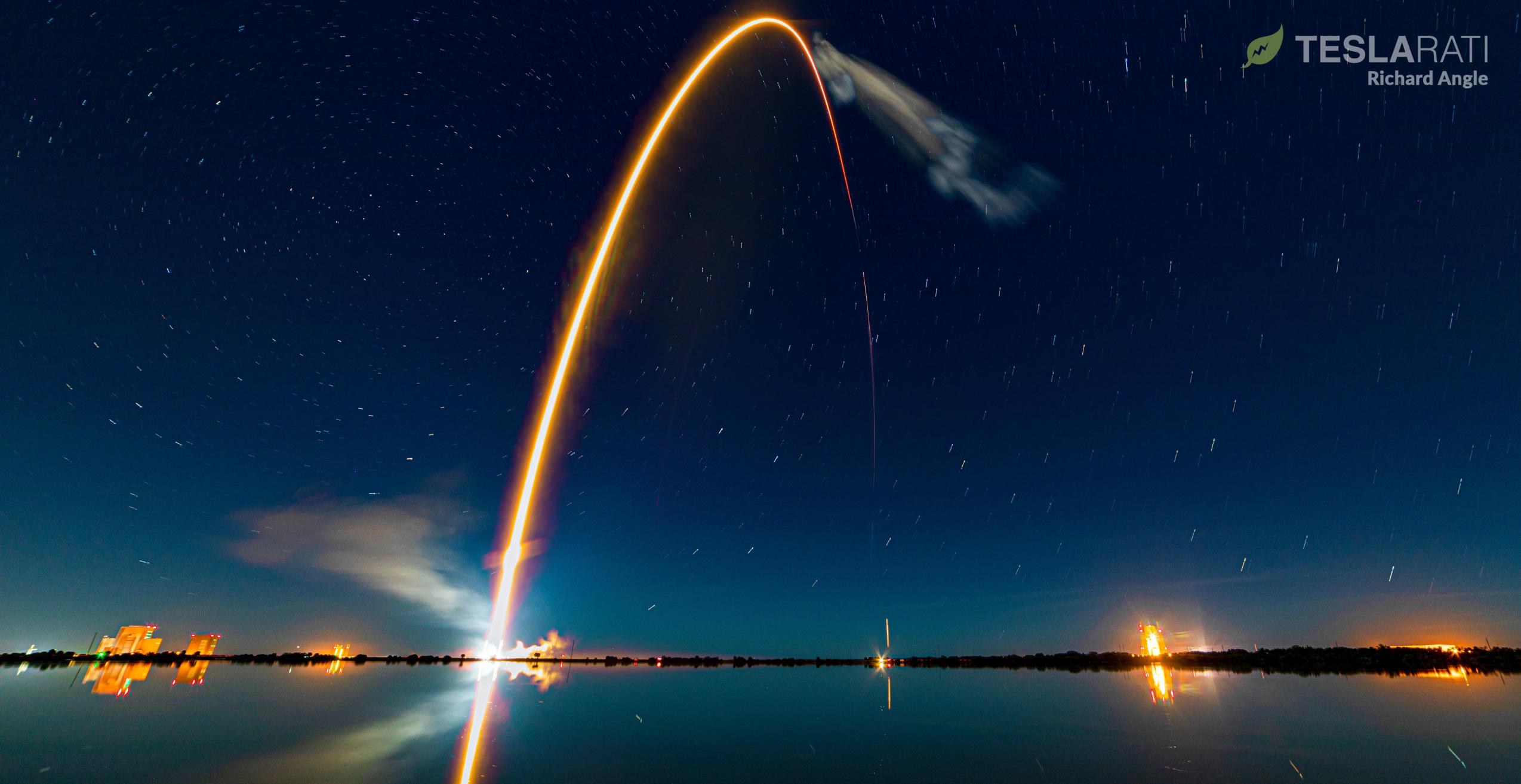
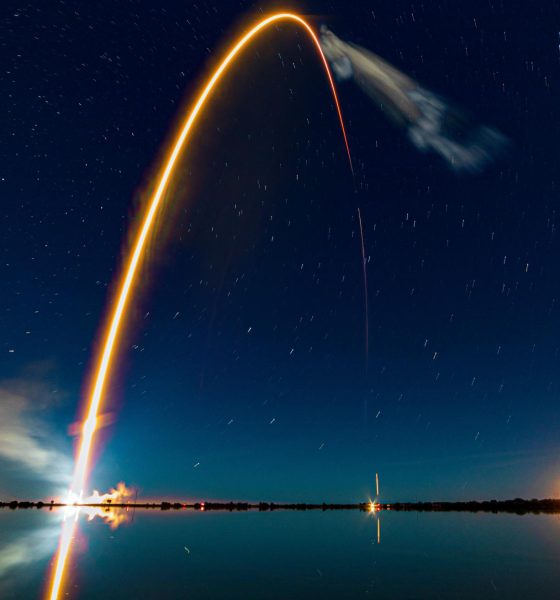
News
SpaceX adds mystery Falcon 9 launch to packed October manifest
SpaceX FCC paperwork has revealed the addition of an unidentified Falcon 9 launch to the company’s packed October manifest, ranging from several Starlink missions to Crew Dragon’s first operational astronaut launch.
Under the US Federal Communications Commission (FCC), companies must submit an application for permission to communicate with their rocket for every single launch. While a major annoyance for those companies and an undeniably clunky process, those applications for “special temporary authority” (STAs) to communicate are one of the only ways members of the public can independently monitor and forecast US launch activities. For SpaceX, the company typically applies for multiple STAs for every single launch, including specific applications for booster launches, landings, and preflight ground tests.
The separate STAs can be connected with a “Mission Number” SpaceX associates each one with, while coordinates included to designate the area of landing communications (i.e. the drone ship recovery zone) often reveals a mission’s trajectory. Combined, STAs can often be used to identify the exact mission (i.e. a Starlink launch, Crew Dragon, etc.). STAs for SpaceX’s upcoming Crew Dragon Crew-1 and Cargo Dragon CRS-21 missions, as well as several Starlink launches, have already been identified.
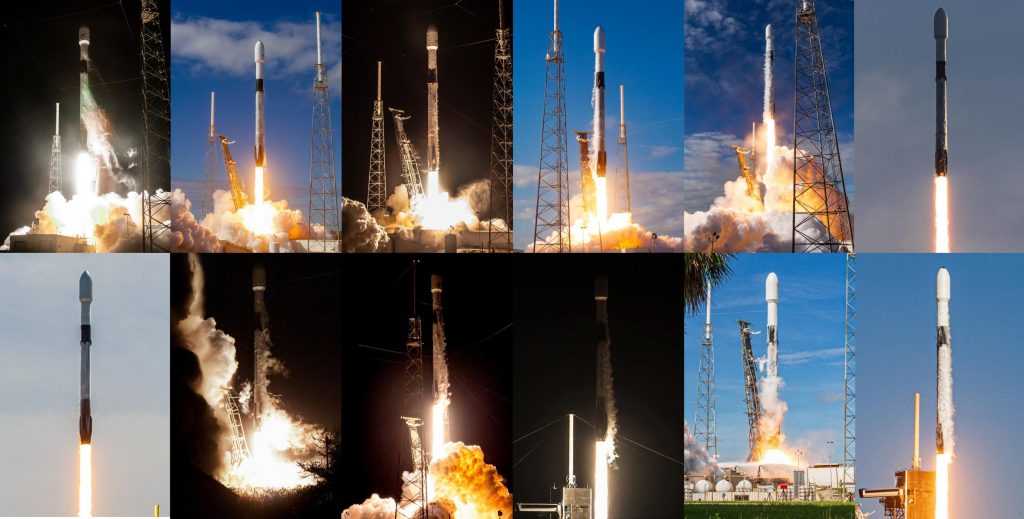
Thanks to bad weather and a flurry of ULA delays, SpaceX’s October manifest is currently packed with three Starlink missions, a GPS III satellite launch for the US military, and Crew Dragon’s first operational astronaut mission to the International Space Station (ISS). Barring a miracle, ULA’s latest Delta IV Heavy launch delay has pushed SpaceX’s GPS III SV04 mission to October 1st.
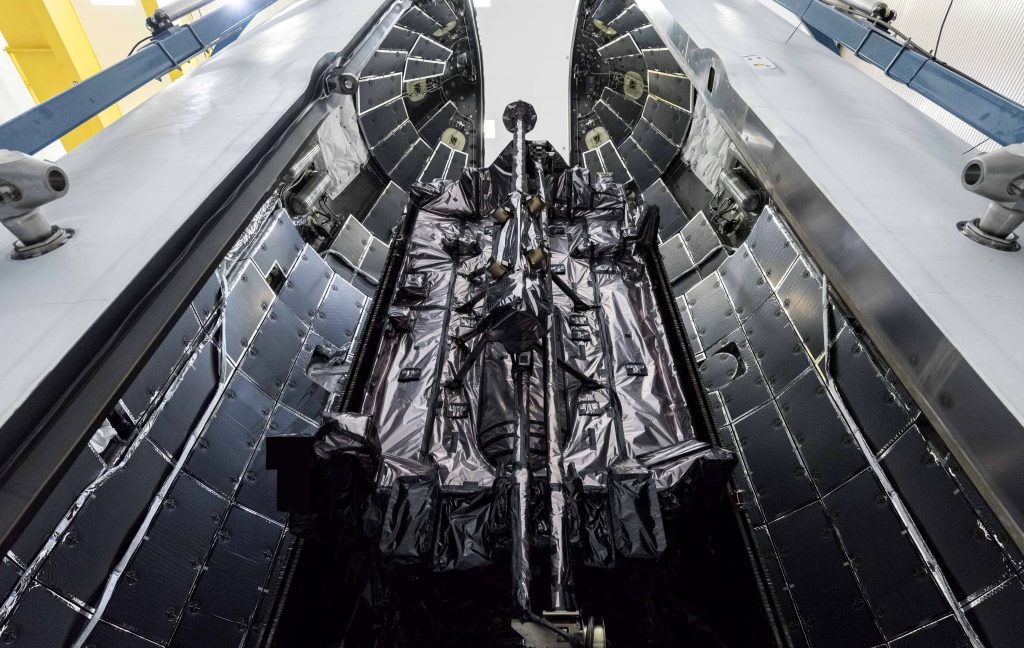
Starlink-12 – SpaceX’s 11th Starlink mission this year and 13th overall – is tentatively set to follow GPS III SV04 at 9:17 am EDT (13:17 UTC) on October 1st. Starlink-13 and Starlink-14 are then scheduled to launch no earlier than mid-to-late-October. Finally, SpaceX and NASA are in the final stages of preparing for Crew Dragon’s Crew-1 mission – the spacecraft’s first operational delivery of astronauts to the ISS – as soon as October 31st (Halloween).
A new Sirius XM radio satellite (SXM-7) could launch on a Falcon 9 rocket on November 6th. On the West Coast, SpaceX’s first California mission since June 2019 could launch on November 10th. SpaceX and NASA are also targeting the launch debut of an upgraded Cargo Dragon 2 resupply spacecraft on a mission known as CRS-21, scheduled to lift off NET November 15th. Last but assuredly not least, Turkey’s Turksat 5A communications satellite could launch as early as November 31st. No Starlink missions are currently scheduled in November but it’s safe to assume that there will be at least one or two. Altogether, SpaceX already has five launches scheduled in October and four set for November. While undeniably prolific, SpaceX has never launched more than three times in one month.
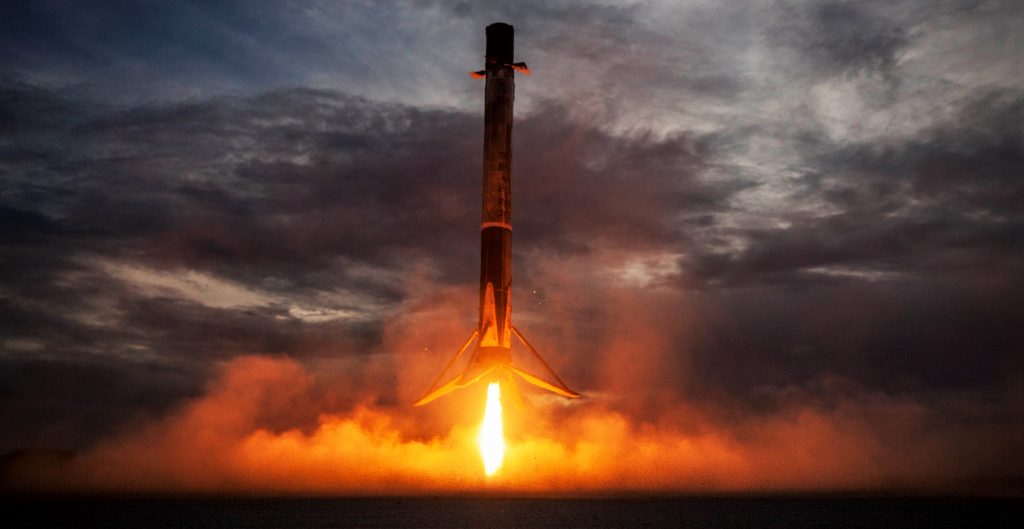
Now, on top of that swath of firm launches, mysterious “SpaceX Mission 1512” has joined the fray. Based on the FCC STA request, the mission is scheduled to launch no earlier than (NET) October 3rd (with a six-month window) and will include a return-to-launch-site (RTLS) Falcon 9 booster landing. The RTLS landing in particular substantially constrains the mission and means – right off the bat – that it can’t be for Starlink, while also ruling out Cargo Dragon CRS-21 (an RTLS landing STA already exists) and Crew Dragon Crew-1 (drone ship landing). Simply put, an RTLS rules out every other launch on SpaceX’s 2020 manifest beyond a rideshare mission tentatively scheduled in December, and SpaceX almost never files for STAs months in advance.
That leaves some kind of unannounced, mystery mission. Only once in SpaceX’s history has the company conducted an unannounced launch – unsurprisingly for some unknown branch of the US military or espionage apparatus. Known as Zuma and still shrouded in secrecy, it followed an almost identical pattern, revealed only through FCC launch and landing communications requests and rumors in 2017 before a January 2018 launch. Although Northrop Grumman was thrown under the bus for a failed payload adapter that may or may not have doomed the satellite, no federal agency has taken credit for the mission – unspeakably odd as far as spaceflight goes.
At the time, unofficial rumors published on Reddit implied that Zuma would only be the first of many similar missions. The claimed failure of a spring-like deployment mechanism and loss of spacecraft – believed to be worth one or several billion dollars – just hours after launch would have unsurprisingly thrown a wrench into those gears. Now, almost three years later and in the midst of an exceptionally busy period of several important launches, could SpaceX be preparing for Zuma-2?
Check out Teslarati’s Marketplace! We offer Tesla accessories, including for the Tesla Cybertruck and Tesla Model 3.

News
Tesla (TSLA) receives “Buy” rating and $551 PT from Canaccord Genuity
He also maintained a “Buy” rating for TSLA stock over the company’s improving long-term outlook, which is driven by autonomy and robotics.

Canaccord Genuity analyst George Gianarikas raised his Tesla (NASDAQ:TSLA) price target from $482 to $551. He also maintained a “Buy” rating for TSLA stock over the company’s improving long-term outlook, which is driven by autonomy and robotics.
The analyst’s updated note
Gianarikas lowered his 4Q25 delivery estimates but pointed to several positive factors in the Tesla story. He noted that EV adoption in emerging markets is gaining pace, and progress in FSD and the Robotaxi rollout in 2026 represent major upside drivers. Further progress in the Optimus program next year could also add more momentum for the electric vehicle maker.
“Overall, yes, 4Q25 delivery expectations are being revised lower. However, the reset in the US EV market is laying the groundwork for a more durable and attractive long-term demand environment.
“At the same time, EV penetration in emerging markets is accelerating, reinforcing Tesla’s potential multi‑year growth runway beyond the US. Global progress in FSD and the anticipated rollout of a larger robotaxi fleet in 2026 are increasingly important components of the Tesla equity story and could provide sentiment tailwinds,” the analyst wrote.
Tesla’s busy 2026
The upcoming year would be a busy one for Tesla, considering the company’s plans and targets. The autonomous two-seat Cybercab has been confirmed to start production sometime in Q2 2026, as per Elon Musk during the 2025 Annual Shareholder Meeting.
Apart from this, Tesla is also expected to unveil the next-generation Roadster on April 1, 2026. Tesla is also expected to start high-volume production of the Tesla Semi in Nevada next year.
Apart from vehicle launches, Tesla has expressed its intentions to significantly ramp the rollout of FSD to several regions worldwide, such as Europe. Plans are also underway to launch more Robotaxi networks in several more key areas across the United States.
News
Waymo sues Santa Monica over order to halt overnight charging sessions
In its complaint, Waymo argued that its self-driving cars’ operations do not constitute a public nuisance, and compliance with the city’s order would cause the company irreparable harm.

Waymo has filed a lawsuit against the City of Santa Monica in Los Angeles County Superior Court, seeking to block an order that requires the company to cease overnight charging at two facilities.
In its complaint, Waymo argued that its self-driving cars’ operations do not constitute a public nuisance, and compliance with the city’s order would cause the company irreparable harm.
Nuisance claims
As noted in a report from the Los Angeles Times, Waymo’s two charging sites at Euclid Street and Broadway have operated for about a year, supporting the company’s growing fleet with round-the-clock activity. Unfortunately, this has also resulted in residents in the area reportedly being unable to sleep due to incessant beeping from self-driving taxis that are moving in and out of the charging stations around the clock.
Frustrated residents have protested against the Waymos by blocking the vehicles’ paths, placing cones, and “stacking” cars to create backups. This has also resulted in multiple calls to the police.
Last month, the city issued an order to Waymo and its charging partner, Voltera, to cease overnight operations at the charging locations, stating that the self-driving vehicles’ activities at night were a public nuisance. A December 15 meeting yielded no agreement on mitigations like software rerouting. Waymo proposed changes, but the city reportedly insisted that nothing would satisfy the irate residents.
“We are disappointed that the City has chosen an adversarial path over a collaborative one. The City’s position has been to insist that no actions taken or proposed by Waymo would satisfy the complaining neighbors and therefore must be deemed insufficient,” a Waymo spokesperson stated.
Waymo pushes back
In its legal complaint, Waymo stated that its “activities at the Broadway Facilities do not constitute a public nuisance.” The company also noted that it “faces imminent and irreparable harm to its operations, employees, and customers” from the city’s order. The suit also stated that the city was fully aware that the Voltera charging sites would be operating around the clock to support Waymo’s self-driving taxis.
The company highlighted over one million trips in Santa Monica since launch, with more than 50,000 rides starting or ending there in November alone. Waymo also criticized the city for adopting a contentious strategy against businesses.
“The City of Santa Monica’s recent actions are inconsistent with its stated goal of attracting investment. At a time when the City faces a serious fiscal crisis, officials are choosing to obstruct properly permitted investment rather than fostering a ‘ready for business’ environment,” Waymo stated.
News
Tesla FSD v14.2.2 is getting rave reviews from drivers
So far, early testers have reported buttery-smooth drives with confident performance, even at night or on twisty roads.

Tesla Full Self-Driving (Supervised) v14.2.2 is receiving positive reviews from owners, with several drivers praising the build’s lack of hesitation during lane changes and its smoother decision-making, among others.
The update, which started rolling out on Monday, also adds features like dynamic arrival pin adjustment. So far, early testers have reported buttery-smooth drives with confident performance, even at night or on twisty roads.
Owners highlight major improvements
Longtime Tesla owner and FSD user @BLKMDL3 shared a detailed 10-hour impression of FSD v14.2.2, noting that the system exhibited “zero lane change hesitation” and “extremely refined” lane choices. He praised Mad Max mode’s performance, stellar parking in locations including ticket dispensers, and impressive canyon runs even in dark conditions.
Fellow FSD user Dan Burkland reported an hour of FSD v14.2.2’s nighttime driving with “zero hesitations” and “buttery smooth” confidence reminiscent of Robotaxi rides in areas such as Austin, Texas. Veteran FSD user Whole Mars Catalog also demonstrated voice navigation via Grok, while Tesla owner Devin Olsen completed a nearly two-hour drive with FSD v14.2.2 in heavy traffic and rain with strong performance.
Closer to unsupervised
FSD has been receiving rave reviews, even from Tesla’s competitors. Xpeng CEO He Xiaopeng, for one, offered fresh praise for FSD v14.2 after visiting Silicon Valley. Following extended test drives of Tesla vehicles running the latest FSD software, He stated that the system has made major strides, reinforcing his view that Tesla’s approach to autonomy is indeed the proper path towards autonomy.
According to He, Tesla’s FSD has evolved from a smooth Level 2 advanced driver assistance system into what he described as a “near-Level 4” experience in terms of capabilities. While acknowledging that areas of improvement are still present, the Xpeng CEO stated that FSD’s current iteration significantly surpasses last year’s capabilities. He also reiterated his belief that Tesla’s strategy of using the same autonomous software and hardware architecture across private vehicles and robotaxis is the right long-term approach, as it would allow users to bypass intermediate autonomy stages and move closer to Level 4 functionality.








